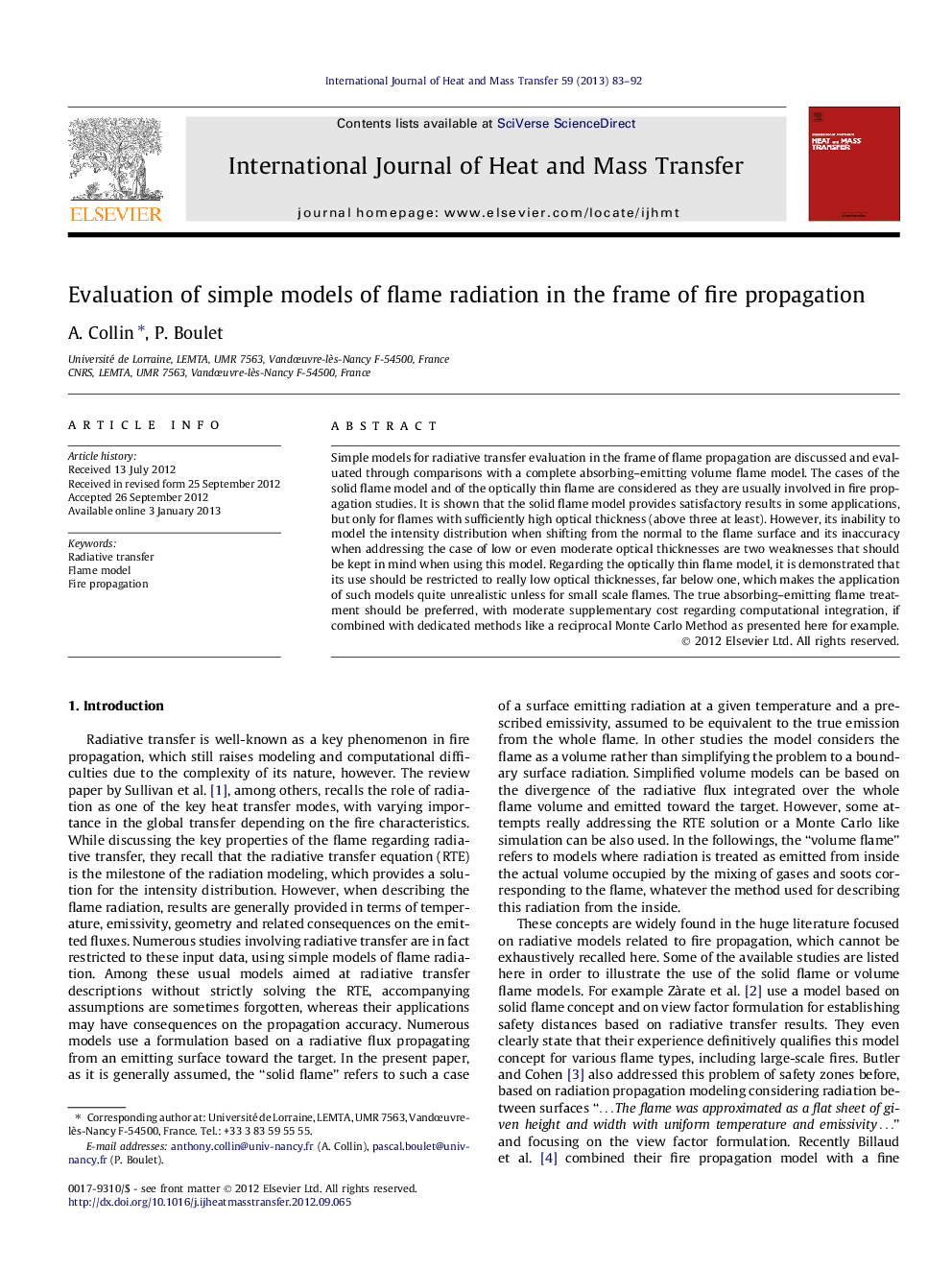| Article ID | Journal | Published Year | Pages | File Type |
|---|---|---|---|---|
| 658542 | International Journal of Heat and Mass Transfer | 2013 | 10 Pages |
Abstract
Simple models for radiative transfer evaluation in the frame of flame propagation are discussed and evaluated through comparisons with a complete absorbing-emitting volume flame model. The cases of the solid flame model and of the optically thin flame are considered as they are usually involved in fire propagation studies. It is shown that the solid flame model provides satisfactory results in some applications, but only for flames with sufficiently high optical thickness (above three at least). However, its inability to model the intensity distribution when shifting from the normal to the flame surface and its inaccuracy when addressing the case of low or even moderate optical thicknesses are two weaknesses that should be kept in mind when using this model. Regarding the optically thin flame model, it is demonstrated that its use should be restricted to really low optical thicknesses, far below one, which makes the application of such models quite unrealistic unless for small scale flames. The true absorbing-emitting flame treatment should be preferred, with moderate supplementary cost regarding computational integration, if combined with dedicated methods like a reciprocal Monte Carlo Method as presented here for example.
Keywords
Related Topics
Physical Sciences and Engineering
Chemical Engineering
Fluid Flow and Transfer Processes
Authors
A. Collin, P. Boulet,
